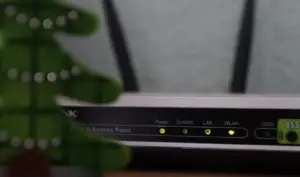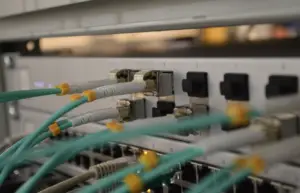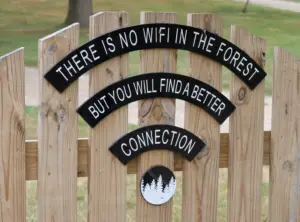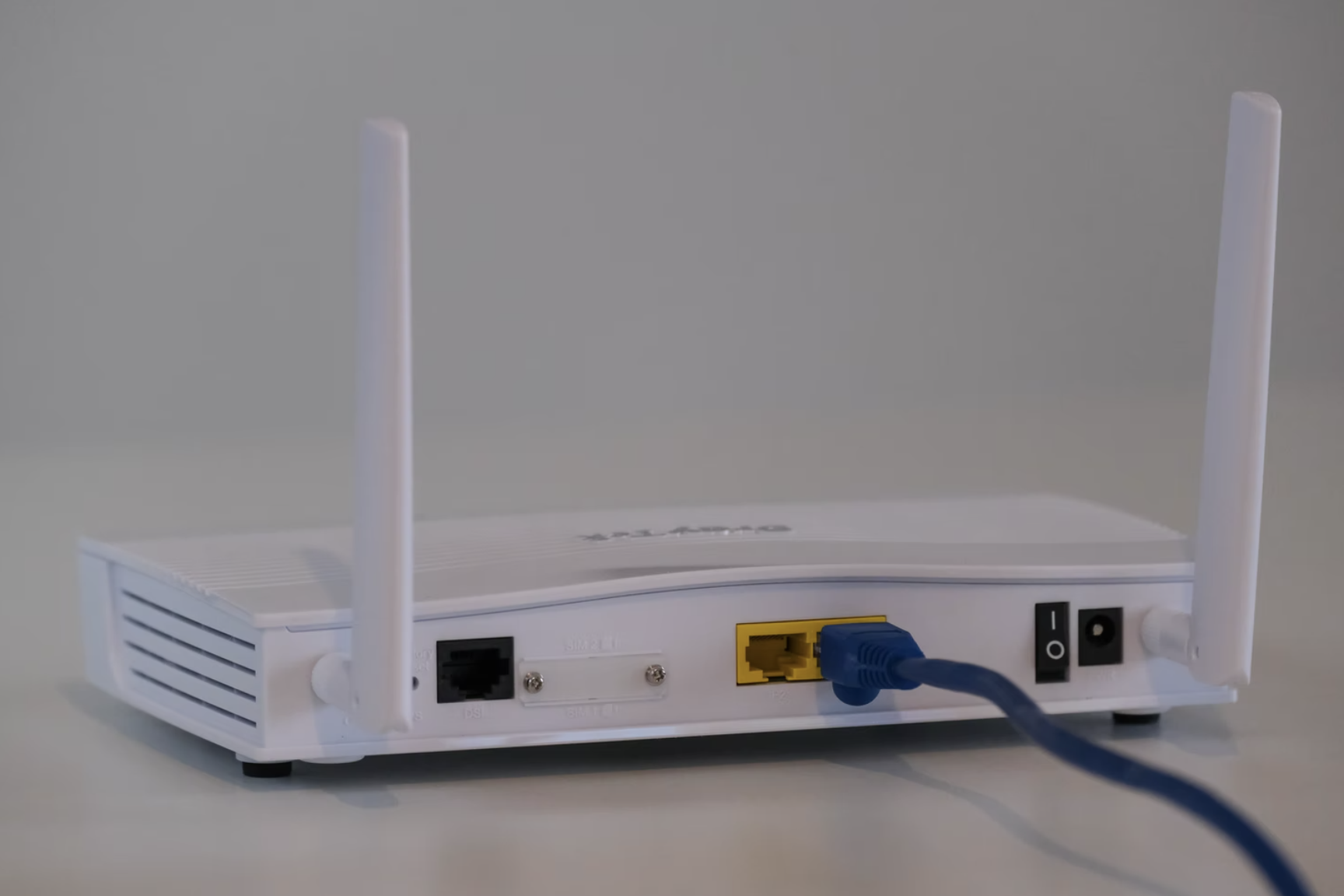If you want to make your WiFi faster, you don’t necessarily have to spend money: Sometimes the right router settings improve the WiFi speed.
If there is a problem with the WiFi, frustration and a bad mood follow: YouTube only shows slide shows, Spotify only plays stuttering rap and the video conference for school or work has already crashed three times. Owners of an older router benefit from investing in a new model, which is presumably not only faster, but also intelligently supplies several devices with data at the same time. If you want to cover greater distances in your house or apartment, you can use a repeater to amplify the WiFi signal or install a powerline adapter that transports the Internet data over the power line.
Before you spend money, however, you should check whether the settings of your existing router can be optimized. In the following, you will find simple tricks that make WiFi faster – and learn how to use them with the existing WiFi installation.

How to make WiFi faster by improving reception
If your WiFi is slow, poor reception is usually to blame. You can improve this with a few simple tricks. Whether with a self-built WiFi amplifier or by repositioning the router – there are many options:
If your WiFi reception is fundamentally poor, you should first change the location of the router. It is best to position it centrally in the apartment and as high up as possible. Also, make sure that there are no thick metal or other sources of interference next to the router.
You should also have your microwave as far away from the router as possible. This article provides a detailed overview of how you can find the optimal router position in your home.
But it can also be the case that the position of the router is already good and you simply have too many sources of interference nearby. Then you must try to remove all Bluetooth devices, microwaves, and other metal objects from the vicinity of your router.
However, you may also need to buy and install a repeater to extend the range of your router and boost the signal. Check out this article for the best tips to improve your reach.
To improve reception, you can also simply build a WiFi repeater yourself. All you need is a piece of aluminum foil, a sheet of paper, glue, and a pair of scissors. If you have so-called “blind spots”, this can help. Blind spots are places where the WiFi is particularly slow or not available at all.
How to make WiFi faster with settings in the router
If the reception has been improved and the range has been optimized, you can still get some speed out of the settings of your router:
If you live in a densely populated residential area, there may be many WiFi networks there. Most of them work with the 2.4 GHz standard and transmit at this frequency.
However, this becomes critical from a certain number of WiFi networks, as they start to overlap. In this case, it can be worthwhile to switch to the 5GHz band. In this article, we will show you exactly what the difference is between 2.4Ghz and 5GHz.
If you have a lot of new devices connected to your WiFi, you can try changing your encryption from WPA2 to WPA2-AES. WPA2 can actually slow down the WLAN standard 802.11n – with WPA2-AES this is no longer the case. The prerequisite is that all devices in your network support this encryption.

How to make WiFi faster with two networks
If your router supports the 2.4 GHz standard as well as the 5 GHz standard, you should use the 5 GHz network as much as possible. But this only works properly if you give the 5 GHz network its own name.
If your 2.4 GHz and 5 GHz networks have the same name, the end device does not know which the 5 GHz network is. So you might get stuck in the 2.4 GHz network.
Go to the settings of your router and look for the menu item “Wireless Network” or “WiFi”. Then select your 5 GHz network and give it a new name.
We recommend adding “_5GHz” or something similar to the name of the 5 GHz network. Then the full name would be, for example, “MainNetwork_5GHz” for the 5 GHz network and only “MainNetwork” for the 2.4 GHz network.
Now all you have to do is delete the 2.4 GHz network from your end devices and connect them to the 5 GHz network. Then the devices will always log into the fast WLAN in the future.
[maxbutton name=”Do you like this article”]
Make WiFi faster with an ideal router position
Where your router is located has a decisive influence on how fast your Internet is. In general, the following applies: The router should be in an elevated position and obstacles should be avoided as far as possible.
See if you can optimize the router’s placement. It is best not to place the radio operator on the floor and certainly not in the closed living room cabinet. Nearby cordless phones, speakers, and metal objects can also affect performance. Ideally, choose a slightly elevated position, for example on a chest of drawers.
If possible, you can also mount the router on the wall – some manufacturers include a suitable bracket with the device. If there is a poor WiFi signal at a short distance from the radio operator, it may also make sense to change the position of the router and the alignment of the antennas (if possible) only slightly.
To find out the best place to place the router, you can use one of the heat mapper tools. The tool tells you where the router should best be located in your home so that reception is equally good everywhere.
How to make WiFi faster by elevating the router
The router is the base station for WLAN in the home network. Therefore, all devices that transmit via a radio network should have the best possible connection to it. In most cases, however, the WLAN router also serves as a DSL modem: This is why it is often near the telephone connection, i.e. more downstairs and in a corner of the apartment. That, in turn, is the worst place for good WiFi.
In order for radio waves to propagate as freely as possible, the router should be elevated – for example on a shelf – and in the middle of the area that its WLAN should cover. Because almost all routers use omnidirectional antennas that emit the WLAN signal almost spherically in all directions.

Make WiFi faster with router cables
For optimal placement, you should therefore remove the DSL router from the telephone socket. The easiest way to do this is to use a longer DSL cable between the TAE socket and the router’s WAN connection. Cable lengths of up to 20 meters should not be a problem, and a greater distance is also possible. How far you can extend the DSL line at home depends on how far your DSL connection is from the exchange of the DSL provider the longer this “last mile” is, the more the data rate suffers from the signal attenuation.
If you do not want to lay a long cable through the apartment, the telephone socket has to be closer to the optimal router location. That is expensive and time-consuming. But you can also set an additional telephone socket yourself and connect it to the first TAE socket using a telephone cable. But even here you have to lay the cables as inconspicuously as possible.
You have the same problem if not the router but a DSL or cable modem provides Internet access: You can then use a standard Ethernet cable to connect to the router and thus bridge up to 100 meters. But here too, the cable should be laid in such a way that it does not become a trip hazard.
If you cannot move the router, you may achieve a better WiFi connection if you set it up vertically instead of horizontally or if you turn it a little: This means that the radio waves take a different path, via which they can then reach WiFi clients such as the PC or the television more undisturbed.
Tip: A USB 3.0 hard drive or stick on the router may also interfere with WiFi transmission over 2.4 GHz. This can happen with poorly shielded USB connections. If you still want to use the mass storage device on the router as a NAS, look in the router menu for an option that reduces the USB transmission to 2.0 speed in order to rule out interference with the WLAN.
[maxbutton name=”Do you like this article”]
How to make WiFi faster: secure your wireless network
If you want to secure your WLAN at home, you should use the WPA2 encryption method, which is considered secure, and assign an access code for both WLAN and router menu in the device settings. Thanks to WPA2, you can transfer data faster with the (no longer brand new) wireless technology IEEE-802.11-n: If you activate the WPA2 protocol with CCMP encryption (AES-based), unlike TKIP encryption, there are no throttling 54 megabits per second (Mbps), which corresponds to the lame g-WLAN.
Your hands are tied in terms of security in public wireless networks; often there is not even a WiFi password here. And everyone who is logged into the same network as you are able to record your data traffic. You can protect yourself against this with Hotspot Shield or another VPN: These establish an encrypted VPN connection to your provider. You will surf a little slower over this, but the transmitted data is secure against eavesdropping.

Important: Faster WiFi by keeping drivers up to date
In order for the WiFi to work perfectly on your computer, it is important that the drivers are always up to date. You can perform driver updates at Microsoft via the Device Manager. If there are newer versions of your driver, you should make these updates. Your WiFi could then work at full speed again.
How to make WiFi faster with handmade repeater
It is very common for some users to check WhatsApp or surf the Internet in the bathroom, but usually, the Wi-Fi signal does not usually reach these sites. For this and many other reasons, everyone is talking about WLAN repeaters.
However, these network repeaters are usually very expensive and not everyone can afford them. But don’t worry, luckily there is a homemade solution for you to increase the range of our WiFi that can save us money.
Here we will talk about two homemade methods for you to make a signal repeater very cheaply. We also assure you that this process will not take more than 10 minutes. You can also maximize your Internet speed with these home WiFi repeaters.

WiFi signal booster with a metal can
This method is quite easy to implement as it only takes an empty can to be able to improve the internet signal in your home. This allows you to direct the signal to reach faraway places from Wi-Fi.
For this reason, we invite you to follow the instructions below to avoid any problems. Make a home WiFi signal booster with a can and improve your WiFi signal at home.
- First, you should look for a can of beer and a craft knife, but you can also use scissors. The idea is to cut the bottom part as the top part.
- In contrast to the bottom of the box, the lid does not have to be cut off completely. Make sure to leave a piece of the box so the top stays attached to the rest of the box.
- Then you need to cut into the box in a straight line from the bottom up and go through the middle to get a kind of satellite dish.
Now the top of the box serves as a stand or base for the rest of the antenna. We already have our WiFi antenna repeaters! - In this step, you just need to run the Wi-Fi antenna through the hole on the bottom of the repeater that we made with the can.
Then you can attach this satellite dish to the WiFi with tape. - Finally, you need to point the WiFi antenna in the direction in which you want the router signal to be amplified.
[maxbutton name=”Do you like this article”]
Use aluminum foil to make WiFi faster
In this new section, we’re going to take the trouble to explain in detail everything you need to do in order to strengthen your WiFi signal with aluminum foil. Without a doubt, this other method for making a home Wi-Fi signal repeater is also quite simple and also does not require any special materials, because everyone in the house has a foil.
- To start, you need to carefully cut out a cardboard box the size of a regular letterhead.
- To continue you need to completely cover the cardboard you just cut with the aluminum foil. In this case, you need to glue the paper to the cardboard with liquid glue or with some tape.
- As soon as the glue has dried, all you have to do is place this aluminum foil behind the antenna of your router. It is ideal to put this sheet on a wall or fix it to redirect the WiFi signal towards areas of our department where the signal was previously very weak.
- On the other hand, it is important to note that this method will reduce interference and protect the router from computer attacks. In this way, we prevent malicious third parties from easily accessing the WiFi.
Without a doubt, a home signal repeater will help us improve the internet of our WiFi router to play online games, connect to video conferencing, watch videos more smoothly, and make many other things we need to do on the internet easier.

Faster WiFi: Cable comeback?
Wireless WiFi is incredibly convenient. But it’s also a fact: The cable can beat a WiFi connection by far when it comes to speed. At up to 100 meters, the cable constantly keeps the promised speed. The WiFi connection, on the other hand, sometimes goes on strike after a few meters. So if you want to surf consistently at a decent pace, there is sometimes no way around the cable.
[maxbutton name=”Do you like this article”]

